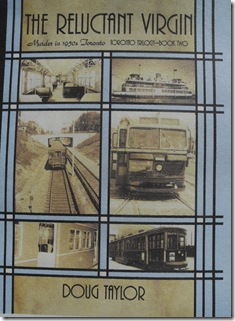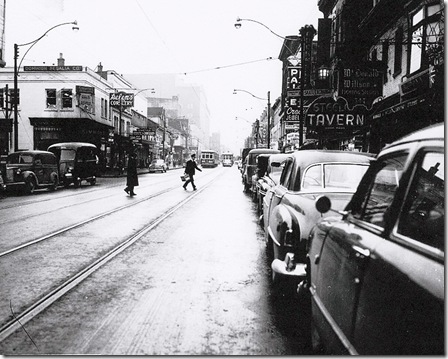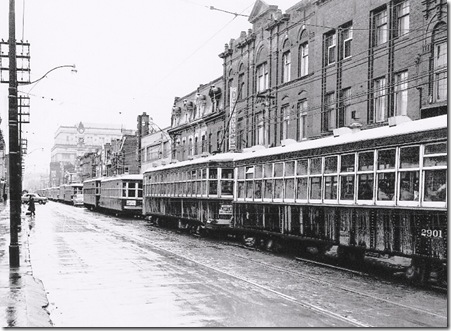“The Reluctant Virgin,” is the second book of the Toronto Trilogy. The chilling murder/mystery is set in Toronto during the 1950s. A sadistic killer, who drains the blood from the victims, haunts the streets and forested valleys of the city. The police are baffled. Four murders occur before they realize that they are dealing with a serial killer. Although the tale is fictional, the story appears extremely real as 1950s Toronto is recreated with detailed accuracy. Sensitive social issues of the 1950s are exposed as they relate to the fictional characters. The book contains many historic photographs of the city during this decade, adding greatly to the impression that the events actually occurred.
The quote below tells of the first murder, which occurs in the secluded darkness of the Humber River Valley.
In a state of confusion, the woman appeared to wander aimlessly on the wooded trail on the river’s east bank. Then she turned and retraced her steps across the bridge. She descended again into the solitude of the valley, and in a daze, meandered along the embankment on the west side of the river. By now, the last traces of twilight had dissolved into the impenetrable darkness of the night. A slight breeze gently swayed the upper branches of the trees as the approaching rain clouds from the west drifted closer. Within a few moments, they ominously obscured the moon.
The woman’s pace was slow. Several times, she stopped to wipe away tears. Oblivious to her surroundings, she was unaware that someone was following her. She continued along the forested trail, the intense darkness having closed the valley against the outside world.
The stalker required no light to perceive the victim, her image burned forever into memory—shoulder-length blonde hair, attractive features, and a shapely body. The stalker cared nothing about her beauty. She was a threat.
Familiar with the contours of the landscape, the stalker walked briskly on an alternate trail to a position on the path ahead of her and waited, hidden among the pitch-black foliage, knowing that the woman would shortly pass by.
Her eyes misted with tears, the woman was stunned when a sinister shadow became human and sprung to life from the gloom surrounding her. She froze in her tracks as she stared at the apparition. The terrifying shape possessed eyes that glowed with hate. She recognized the eyes, which increased her shock.
She was unable to react as fear paralyzed her.
With only a moment’s hesitation, the stalker smashed a fist-sized rock against the young woman’s head. She collapsed. As she lay unconscious, the murder weapon was thrown into the river. Next, the stalker lifted the helpless victim, carried her away from the path beside the river, and dumped her into the thick undergrowth.
In the darkness amid the secluded bushes, the stalker sexually violated her, and when finished, executed a strange course of action. An observer might have mistaken it for a ritual.
The stalker’s face displayed no emotion while patiently waiting for the victim’s breathing to cease. When certain she was dead, the murderer slipped away into the impenetrable darkness, thinking no more of the corpse in the valley than if it had been a sack of garbage.
Historic photos of 1950s Toronto that are included in the book.
City of Toronto Archives, Series 574, S 0754, file 0054, id49757
Yonge Street looking north from Dundas Street in 1951
City of Toronto Archives, Series 381, file 0305, id1955-1
Yonge Street looking south toward College Street, College Park (the old Eaton’s College Street Store) visible in the distance. The streetcars are the famous Peter Witt trolleys.


